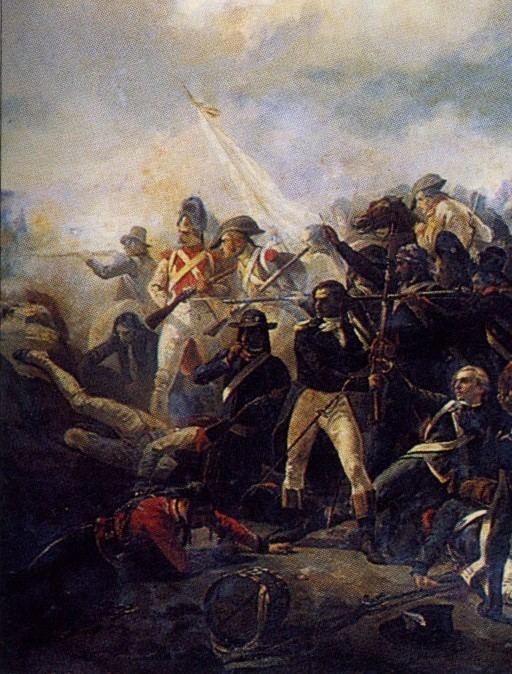The Armée des Émigrés (English: Army of the Émigrés), were counter-revolutionary armies raised outside France by and out of Royalist Émigrés, with the aim of overthrowing the French Revolution, reconquering France and restoring the monarchy. These were aided by royalist armies within France itself, such as the Chouans, and by allied countries such as Great Britain. They fought, for example, at the sieges of Lyon and Toulon.
They were formed from:
noblemen volunteers, either descendants of the ancient royal family or not, who had fled Francetroops raised by these nobles through subsidies from other European monarchies, or through their own meansunits of the French army which had also emigrated, such as the 4th Hussar RegimentEven Napoleon I said of them "True, they are paid by our enemies, but they were or should have been bound to the cause of their King. France gave death to their action, and tears to their courage. All devotion is heroic".
Régiment de MortemartRaised in Germany in 1792, at Trier, and commanded by marshals de Broglie and de Castries, under the aegis of Louis XVI's brothers, the comte de Provence and duc d'Artois. 10,000 strong, it returned to France beside the army of Brunswick and was dismissed on 24 November 1792, two months after the French victory at Valmy.
Creation: 1794Also known as: Légion royale des Pyrénées in MayFounder: Marquis de Saint-SimonCommander: Marquis de Saint-SimonSize: 600 infantrymen and a squadron of hussarsTheatre of operations: Pyrénées-AtlantiquesEngagements: Saint-Étienne-de-Baïgorry (26 April 1794), heavy losses (17 prisoners guillotined); montagnes d’Arquinzun (10 July), heavy losses (30 to 50% of its effective strength); Port-Bidassoa (24 July), heavy losses covering the Spanish retreat (50 captured); Siege of Pampelune (November).Operated within the Spanish army of NavarreSent to the front in 1795, then integrated into the le régiment de BourbonCreation: 1793Also known as: Légion de la Reine (d'Espagne) in June 1794Founder: Comte de Panetier (died January 1794)Commander: Comte de Panetier, then général de Santa-ClaraSize: 400; brought up to strength in June 1794 by the companies du Royal-Provence escaping from the Siege of Toulon and the companies du Royal RoussillonTheatre of operations: Pyrénées-OrientalesEngagements: Defence of Port-Vendres (May 1794), evacuated by sea (to avoid being captured and guillotined); Zamora 5 January 1796Operating within the Spanish armyAmalgamated into the le régiment de BourbonCreation: 1793Also known as: Bataillon de la frontière circa May 1793Founder: Spanish general Ricardos, Spanish soldiers under Émigré officersCommander:Size:Theatre of operations: Defence of Vallespir, then RoussillonEngagements:Operating within the Spanish armySeveral desertions to the légion de Panetier - Amalgamated into the le régiment de BourbonCreation: January 1794 at Barcelona from émigrés, prisoners and desertersAlso known as:Founder: Général RicardosCommander:Size: 200 in June 94 (of which 129 were massacred by a mob since they were amusing themselves in their barracks on a procession day)Theatre of operations:Engagements: NoneSubsumed into the légion de Panetier (becoming the légion de la Reine at that moment)Creation: 1796 from the légion de la Reine (ex-légion de Panetier), the Bataillon de la frontière, and the légion royale des PyrénéesAlso known as: Integrated into the Spanish army as number 47, then 37Founder: Marquis de Saint-SimonCommander : Marquis de Saint-SimonSize: 1600 (1808)Theatre of operations: garrisoning Ciudad Rodrigo (1797) then MajorqueEngagements: Siege of Gérone (fell 9 December 1808, 300 captured); Rozas (1808)Operating within the Spanish armyStill in existence 1814; formed of foreign soldiers and gardes Wallonnes, under number 41, then in 1860 became Spain's "53rd infantry regiment", known as El Emigrado. 
